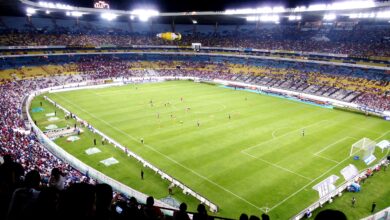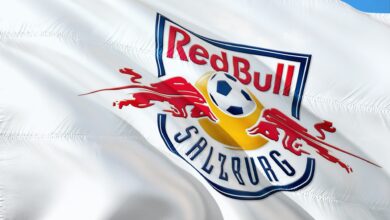copa del rey

Copa del Rey, also known as “The King’s Cup,” is one of Spain’s most prestigious football tournaments. Organized by the Royal Spanish Football Federation, it is the oldest Spanish football competition, capturing the attention of fans from around the world with its dramatic matchups and unforgettable moments.
Table of Contents
Introduction to Copa del Rey: A Historic Football Tradition
Over the years, the format of Copa del Rey has undergone several changes to adapt to the growing demands of the sport. From a straightforward knockout stage to the inclusion of lower-division teams, the tournament has continually expanded to ensure a more inclusive and competitive structure. Currently, the tournament features a knockout format where clubs face off in single-leg matches until the semifinals, which are played over two legs.
An Overview of Copa del Rey
Copa del Rey, officially known as “The King’s Cup,” is the oldest and most respected football tournament in Spain. Organized by the Royal Spanish Football Federation, this competition has been a staple of Spanish football since its inception in 1903. It features teams from La Liga, as well as clubs from lower divisions, creating a stage where underdogs can challenge the giants of Spanish football.
The Significance of Copa del Rey in Spanish Football
The significance of Copa del Rey goes beyond just being a trophy; it holds a special place in Spanish culture and sports history. Winning Copa del Rey is not only about the glory and the honor but also about gaining national pride and a sense of accomplishment. It is one of the few tournaments that allows teams from all divisions to showcase their talent on a grand scale, making it a true celebration of Spanish football.
Why Fans Love Copa del Rey
Fans love Copa del Rey for its thrilling nature, unpredictable results, and the chance to witness smaller clubs take on the biggest names in Spanish football. The tournament’s format, with its single-elimination knockout stages, adds to the excitement, often leading to dramatic finishes, penalty shootouts, and giant-killer moments that capture the hearts of fans worldwide.
How Copa del Rey Differs from Other Competitions
Unlike the regular league matches where teams compete over a season to earn points, Copa del Rey follows a knockout format. This makes every match a do-or-die situation, where one mistake can end a team’s journey in the tournament. This high-stakes format, combined with the possibility of upsets, sets Copa del Rey apart from other competitions like La Liga or the UEFA Champions League.
A Tournament for All: Involving Clubs of All Levels
One of the unique aspects of Copa del Rey is its inclusivity. The competition allows clubs from all tiers of Spanish football to participate, from the top-flight La Liga teams to the amateur sides. This not only provides an opportunity for smaller clubs to gain recognition but also enriches the tournament with diverse playing styles and competitive spirit.
This detailed introduction helps set the stage for the rest of the article, giving readers a clear understanding of Copa del Rey’s essence and why it holds such a special place in the hearts of football enthusiasts.
The Origins of Copa del Rey: Tracing Its Roots
Copa del Rey was established in 1903 to celebrate the coronation of King Alfonso XIII, making it Spain’s oldest football competition. Initially a regional event with limited participation, it quickly expanded into a national tournament as its popularity grew. The support of King Alfonso XIII played a vital role in elevating the status of the competition, transforming it into a prestigious event that showcased Spain’s top football talent. Athletic Bilbao became the first champion, setting the standard for the high level of play that would come to define Copa del Rey.
Birth of Copa del Rey: A Royal Beginning
Copa del Rey was established in 1903, making it the oldest football competition in Spain. The tournament was initially organized to celebrate the coronation of King Alfonso XIII, which is why it was named “The King’s Cup.” Its creation marked the beginning of a tradition that would grow to become one of Spain’s most cherished sporting events.
The Role of King Alfonso XIII
King Alfonso XIII played a significant role in the inception of Copa del Rey. As a patron of sports and a supporter of football in Spain, his backing gave the tournament royal approval and elevated its status in the country. His influence ensured that Copa del Rey would be seen not just as a sporting event but also as a prestigious competition tied to Spanish heritage and culture.
Early Days of the Tournament
In its early years, Copa del Rey was relatively small, with only a few clubs participating, mainly from Madrid and nearby regions. The tournament’s initial matches were often held in a straightforward format, with the winner crowned after a few rounds of competition. Despite its humble beginnings, it quickly gained popularity among both players and spectators, laying the foundation for its future growth.
First Champions: Setting the Standard
The first Copa del Rey final took place in 1903, with Athletic Bilbao emerging as the inaugural champion. Their victory set the standard for the competitive spirit and high level of play that would come to define the tournament. Over the years, many legendary clubs and players would go on to follow in their footsteps, contributing to the rich legacy of Copa del Rey.
Evolution from Regional to National Tournament
Initially, Copa del Rey was limited to clubs from specific regions, but it soon expanded to become a nationwide competition. The growing popularity of football in Spain led to more teams joining the tournament, including clubs from all over the country. This transformation helped Copa del Rey evolve from a regional event into a national spectacle, attracting the attention of fans from every corner of Spain.
These points highlight the historical origins of Copa del Rey, emphasizing how it grew from a modest tournament into one of the most significant competitions in Spanish football.
Evolution of the Tournament Format: Copa del Rey’s Transformation Over the Years
Copa del Rey’s format has evolved significantly since its inception. Initially, it followed a simple knockout structure, which later expanded to include more teams from across Spain. During the mid-20th century, a two-legged format was introduced to ensure fairness, but the tournament eventually returned to single-elimination rounds for most stages to increase excitement. Today, Copa del Rey includes lower-division teams, giving them a chance to compete against top-tier clubs, making the competition more inclusive and unpredictable.
Early Years: Simple Knockout Format
In its early days, Copa del Rey followed a straightforward knockout format where teams would compete in single-elimination matches. The simplicity of this structure made each match a high-stakes encounter, adding to the excitement as teams fought for their survival in the tournament. This format laid the groundwork for the drama and unpredictability that the tournament would become known for.
Expansion of the Competition
As Copa del Rey grew in popularity, the competition expanded to include more teams from different regions of Spain. This expansion increased the number of participating clubs, making the tournament more competitive and inclusive. It also marked the beginning of the nationwide appeal of Copa del Rey, attracting fans and teams from across the country.
Introduction of the Two-Legged Format
During the mid-20th century, Copa del Rey adopted a two-legged format for many of its rounds, including the semifinals and finals. In this setup, each pair of teams played two matches—one at each club’s home ground—with the aggregate score determining the winner. This change was introduced to provide a fairer chance to both teams and reduce the possibility of luck deciding the outcome of a single match.
Single-Elimination Returns
In recent years, the tournament returned to the traditional single-elimination format for most of its rounds, with only the semifinals being played over two legs. This switch back to single-elimination games has added a layer of excitement, as every match can result in a direct knockout, leading to more unpredictable and thrilling outcomes.
Current Format of Copa del Rey
The current format of Copa del Rey involves a knockout competition that starts with lower-division clubs and eventually includes top-tier La Liga teams in later rounds. Matches are typically played as single-leg fixtures until the semifinals, which are conducted over two legs. The final remains a single match, often held at a neutral venue, to crown the champion of Copa del Rey.
Inclusion of Lower-Division Teams
One of the most significant changes in the tournament’s evolution has been the inclusion of lower-division teams. This decision has allowed clubs from the lower tiers of Spanish football to compete against the biggest names in the sport. It has provided opportunities for smaller clubs to shine on a national stage, occasionally resulting in “giant-killer” victories that have become part of Copa del Rey’s legendary history.
These points illustrate the evolution of Copa del Rey’s tournament format, highlighting how it has adapted over the years to maintain its status as one of Spain’s most exciting and inclusive football competitions.
Key Moments in Copa del Rey History: Defining Moments of Glory
Copa del Rey’s history is marked by defining moments that have shaped Spanish football. The first final in 1903 saw Athletic Bilbao claim victory, setting the stage for their early dominance in the tournament. Over the years, the competition has been known for its thrilling “giant-killer” moments, where lower-division teams upset top-tier clubs, like Alcorcón’s famous 4-0 win over Real Madrid in 2009. Historic finals, such as Real Madrid’s dramatic victory over Barcelona in 2014, and the modern-era rivalry between Lionel Messi and Cristiano Ronaldo, have further elevated the tournament’s status. These key moments have turned Copa del Rey into a celebrated platform of Spanish football glory.
The First Copa del Rey Final (1903)
The very first Copa del Rey final in 1903 was a historic event that set the tone for what would become one of Spain’s most prestigious football tournaments. Athletic Bilbao claimed victory in the inaugural match, defeating Madrid FC (now Real Madrid) to become the first champions. This initial triumph not only established Athletic Bilbao as a force in Spanish football but also highlighted the competitive nature that would define the tournament’s future.
Athletic Bilbao’s Early Dominance
Athletic Bilbao quickly emerged as a powerhouse in the early years of Copa del Rey, winning multiple titles throughout the 1900s and 1910s. Their dominance in these early years set a benchmark for consistency and excellence in Spanish football. Bilbao’s success was instrumental in establishing Copa del Rey as a competitive platform that could showcase the best talent in Spain.
Giant-Killer Moments: Upsets That Shocked the Nation
One of the most thrilling aspects of Copa del Rey is the frequent occurrence of giant-killer moments, where lower-division teams manage to defeat top-tier clubs in dramatic fashion. These upsets have become legendary, capturing the imagination of fans and reminding everyone that anything is possible in football. Moments like Alcorcón’s stunning 4-0 victory over Real Madrid in 2009 are etched in Copa del Rey history, proving that determination and team spirit can often outshine experience and skill.
These giant-killer moments have added to the tournament’s allure, making it a competition where even the underdogs can rise to the occasion. These unexpected victories are celebrated not just by the winning teams but by football fans around the world who cherish the unpredictable nature of the sport.
Historic Finals: Dramatic Matches and Memorable Goals
Copa del Rey has been the stage for some of the most dramatic finals in football history. Matches like the 2014 final between Real Madrid and FC Barcelona, where Gareth Bale’s extraordinary solo goal sealed the win for Madrid, are examples of the high-stakes drama that defines the competition. These finals often feature unforgettable goals, last-minute turnarounds, and intense rivalries that make them a highlight of every football season.
Modern Era: The Messi and Ronaldo Rivalry
In recent years, Copa del Rey has been dominated by the fierce rivalry between Lionel Messi and Cristiano Ronaldo. Their extraordinary performances in the tournament have set new records and raised the standard of play to unprecedented levels. Matches featuring their clubs, FC Barcelona and Real Madrid, have drawn worldwide attention, with each player delivering breathtaking moments that continue to elevate the tournament’s prestige.
Impact of Copa del Rey on Spanish Football
The influence of Copa del Rey on Spanish football extends beyond just the clubs and players. It has played a key role in promoting football culture throughout the country, providing a platform for emerging talent, and strengthening the bonds between local communities and their teams. Copa del Rey’s importance in Spain’s football ecosystem cannot be overstated, as it continues to be a tournament that shapes the future of the sport in the nation.
These key moments in Copa del Rey’s history highlight the tournament’s significance in Spanish football, showcasing how it has evolved into a competition filled with unforgettable matches, legendary players, and historic victories.
Conclusion: The Legacy of Copa del Rey
Copa del Rey has made a profound impact on Spanish football, shaping the sport’s landscape and providing a platform for legends to emerge. Its inclusive nature allows clubs from all divisions to compete, fostering unity and passion for the game across the country. The tournament holds significant cultural and historical importance, reflecting Spain’s rich football heritage and bringing fans together. As it looks to the future, Copa del Rey will continue to evolve while preserving its unique charm. Ultimately, it remains a cherished symbol of football’s spirit, celebrating the unpredictability, excitement, and community that make the sport special.
Copa del Rey’s Enduring Impact on Spanish Football
Copa del Rey has left an indelible mark on Spanish football. It has shaped the landscape of the sport in Spain by offering a platform where legends are born, and history is made. The tournament’s inclusive nature, which allows clubs from all divisions to compete, has not only raised the level of competition but also promoted unity and passion for football across the country.
A Platform for Emerging Talent
Over the decades, Copa del Rey has become a stepping stone for young and emerging players to showcase their abilities on a grand stage. Many of today’s football superstars made their mark in Copa del Rey before rising to international fame. The tournament continues to play a crucial role in discovering and nurturing the next generation of football talent in Spain.
Focus Heading: Cultural and Historical Significance
Copa del Rey is not just a football tournament; it is a cultural and historical symbol deeply embedded in Spanish society. With its origins dating back to the early 20th century, the competition has grown alongside Spain’s football culture, influencing generations of fans and players. It is celebrated as much for its royal roots and national pride as it is for its thrilling matches. Copa del Rey has become a reflection of Spain’s sporting spirit, passion, and community, standing as a testament to the country’s rich football heritage.
This cultural significance has transformed Copa del Rey into more than a competition; it is an event that brings together fans from diverse backgrounds, united by their love for the sport. Its ability to blend tradition with modernity has made Copa del Rey a tournament that resonates with football enthusiasts worldwide.
The Future of Copa del Rey
Looking ahead, Copa del Rey is expected to continue its evolution while preserving its unique charm and spirit. The tournament is likely to adapt to the ever-changing dynamics of modern football while maintaining its core principles of inclusivity and competitive integrity. As Spanish football grows on the global stage, Copa del Rey will undoubtedly play a pivotal role in shaping its future.
Why Copa del Rey Will Always Be Special
Copa del Rey holds a special place in the hearts of football fans because it represents the true essence of the sport—passion, unpredictability, and the thrill of the underdog. Its legacy is built on countless unforgettable moments, legendary performances, and the unity it brings to Spanish football. No matter how much the game changes, Copa del Rey will always be cherished as a symbol of football’s rich tradition and the magic of the beautiful game.
These points highlight the lasting legacy of Copa del Rey, showcasing how it continues to influence Spanish football while remaining a beloved cultural institution in the world of sports.




